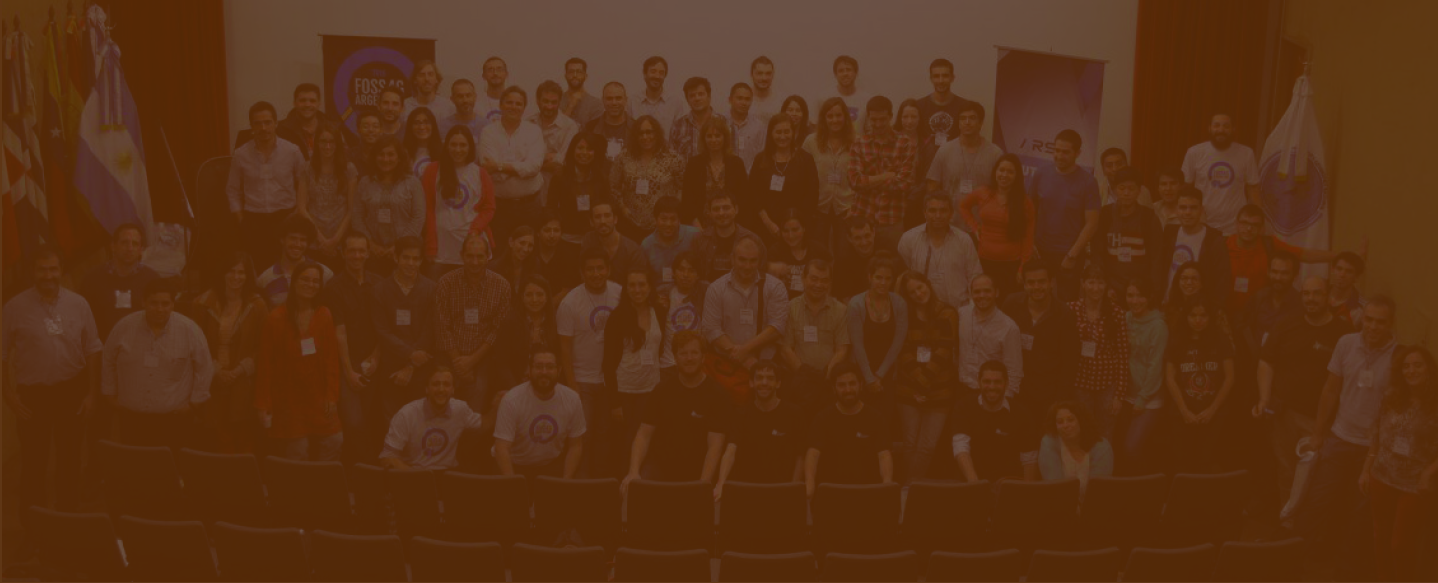2021-09-28, 09:00–13:00, Juana Azurduy
In this workshop we will explore the use of GRASS + R for downloading and processing Sentinel 2 satellite images, in order to generate automatic outputs for monitoring water quality. With the use of the GRASS “i.sentinel” toolset, the power of GRASS “r.mapcalc” and the great graphical outputs of R package “tmap”, it is possible to generate a semi automatic workflow that is very useful for various spatial applications. In this case, we focus on the problem of eutrophication that affects many water bodies in the world due to the accelerated increase in organic pollution.
Don't forget to register before we run out of tickets!
Extensive eutrophication process in water body may lead to the creation of algal blooms, reduction in oxygen supplies, death of aquatic life and danger to human health (Wetzel, 2001). Monitoring eutrophic processes is therefore mandatory to the aquatic environment and human health. However, the changes in the spatial and seasonal distribution of the phenomena are difficult to be resolved using sparse water sampling or single acquisition of remote sensing data (German et al., 2020).
The Sentinel-2A satellite was successfully launched on June 2015 and the Sentinel-2B on March 2017, as part of the European Copernicus program (https://www.copernicus.eu/en). Both satellites carry an innovative wide-swath, high-resolution, multispectral imager (MSI) with 13 spectral bands. The combination of high spatial resolution (up to 10 m) and a radiometric resolution of 12-bit, novel spectral capabilities (e.g., three bands in the red-edge plus two bands in the SWIR), wide coverage (swath width of 290 km) and a minimum five-day global revisit time (with 2 satellites in orbit) is expected to provide extremely useful information for a wide range of land and coastal applications (Malenovsky, Zbynek, et al. 2012). Specifically this availability of open access satellite images offered a great new potential in lake remote sensing. The spatial resolution of the sensor permit that even small lakes can be studied. Although the MSI was not designed for aquatic remote sensing, up to now the usefulness of the MSI for water applications has been demonstrated (Bonansea et al., 2019; Alba German, et al., 2019).
Geographic Resources Analysis Support System (GRASS GIS) is a Geographic Information System (GIS) technology built for vector and raster geospatial data management, geoprocessing, spatial modelling and visualization. It is a free and Open Source Software released under the terms of the GNU General Public License (GPL >= v2). GRASS GIS capabilities are significantly increased by an impressive list of extensions or addons. One of them is the “i.sentinel” toolset, created by Martin Landa, Roberta Fagandini, Anika Weinmann, Guido Riembauer, and Markus Neteler, which contains modules to manipulate Sentinel 2 images inside GRASS.
On the other hand, thematic maps are geographical maps in which spatial data distributions are visualized. With the “tmap” package, thematic maps can be generated with great flexibility. This package offers a layer-based and easy to use approach. It is based on the grammar of graphics, and resembles the syntax of ggplot2 (Tennekes, 2018).
In this workshop, a workflow is presented using Sentinel-2 (S2) for the automatic monitoring of lake water quality, using the utilities of GRASS GIS software + tmap in R language. We will download and process Sentinel 2 images with GRASS commands in bash, in order to generate, using “r.mapcalc”, trophic state and algae bloom products. After, we will create maps using “tmap” in R, with the package “rgrass7” to connect to GRASS locations.
German, Alba (1) (2) (3)
Ferral, Anabella (1) (2)
Scavuzzo, Marcelo (1)
(1) Mario Gulich Institute, CONAE-UNC, Córdoba, Argentina
(2) National Council of Scientific Research and Technology (CONICET), Buenos Aires, Argentina.
(3) Geography department, National University of Cordoba, Argentina.
Level –2 - Basic. General basic knowledge is required.
Requirements for the Attendees –For this workshop, general basic knowledge in GRASS, R, satellite images and LINUX is required. Skill requirements are needed specifically to use the BASH scripts that will be shown to download and process Sentinel 2 images in GRASS and then finish the outputs in R Studio. Linux basic knowledge is required, because Windows will not be used at all.
I have a bachelor in environmental science and management and a master in spatial applications. I am doing a PhD in Geomatics in Mario Gulich institute (CONAE-UNC) and teach GIS in the university (UNC). I focus on developing spatial tools for water resources management for local authorities (Córdoba, Argentina).

